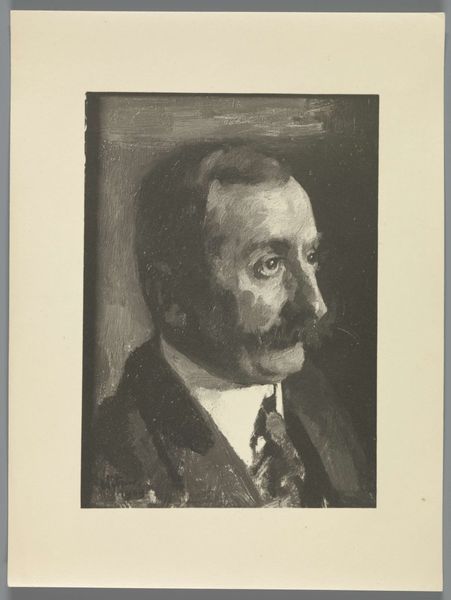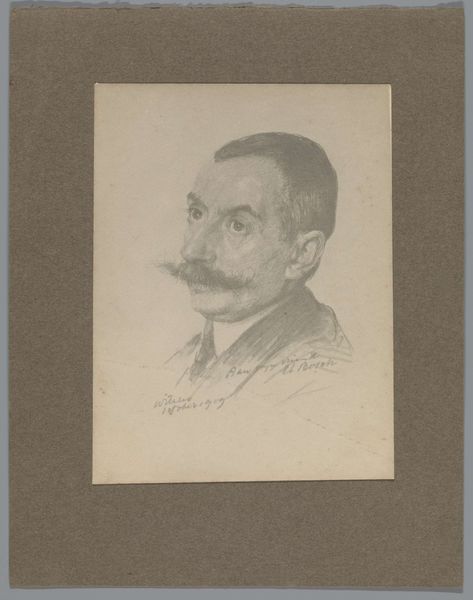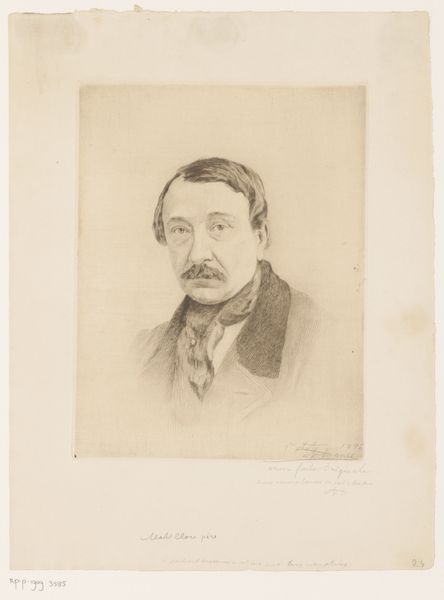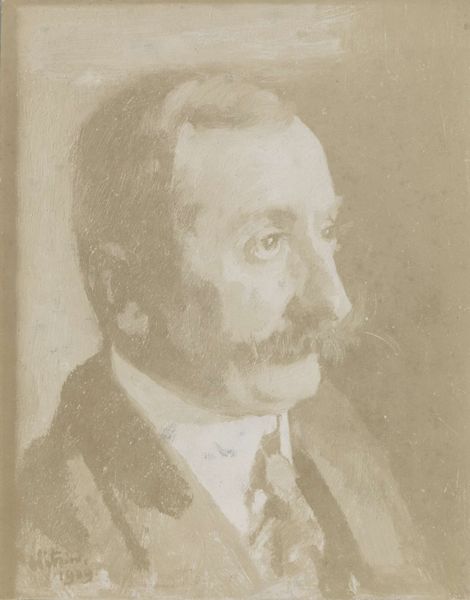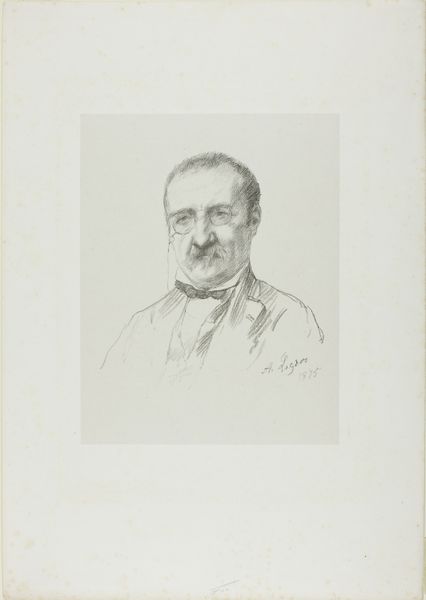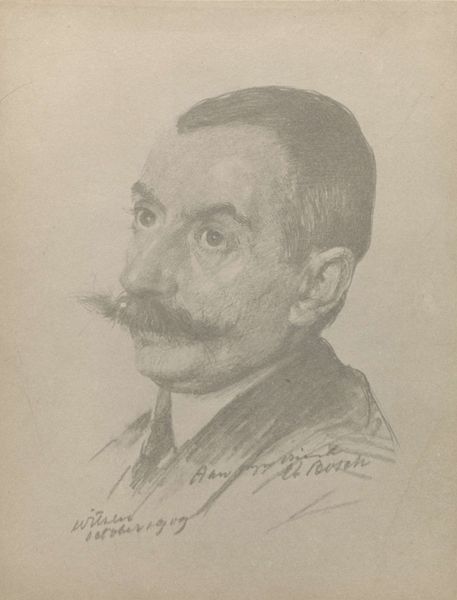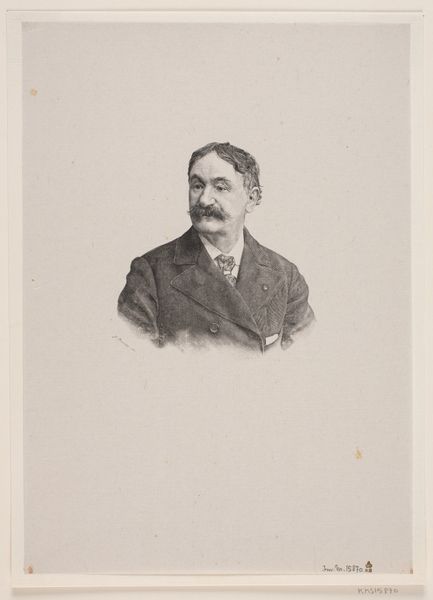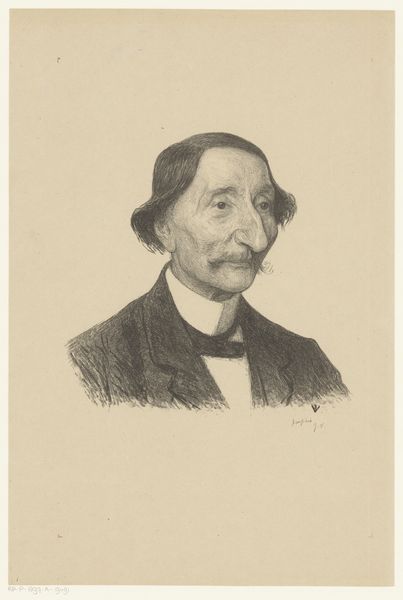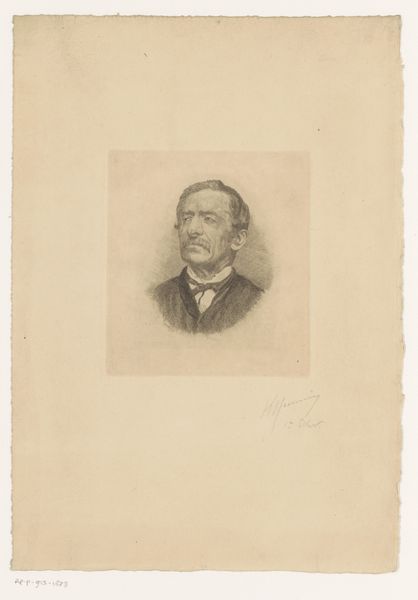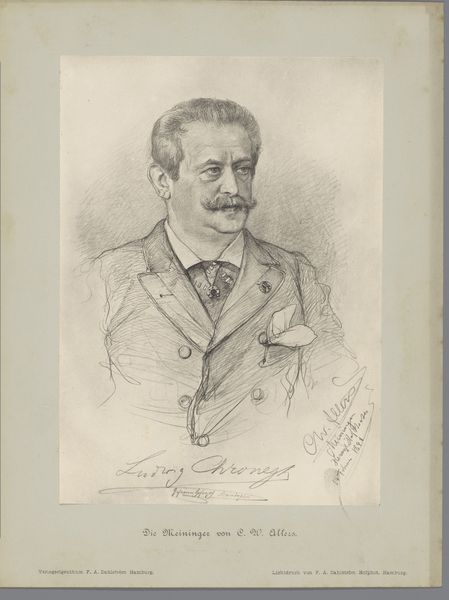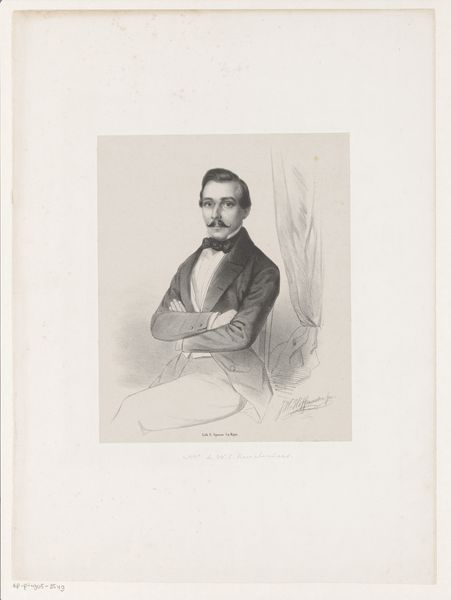
drawing, pencil, graphite
#
portrait
#
drawing
#
pencil drawing
#
pencil
#
graphite
#
portrait drawing
#
watercolour illustration
#
realism
Dimensions: height 231 mm, width 174 mm, height 168 mm, width 119 mm
Copyright: Rijks Museum: Open Domain
Curator: Let's discuss this portrait drawing, attributed to an anonymous artist after a photograph of Willem Witsen, and dating roughly from 1860 to 1915. It's a compelling piece in graphite and pencil, currently residing here at the Rijksmuseum. Editor: My first thought is of its intimate yet distant mood. The soft shading almost seems to veil the sitter, creating a sense of both presence and unknowability. Curator: The artist's application of pencil is indeed skillful. Notice how the delicate hatching defines the planes of the face and clothing, rendering depth with subtle gradations. The strategic use of light, particularly on the forehead and cheek, draws the eye and articulates the form. Editor: The mustache and bow tie, however, are so prominent; they can’t be accidental. A powerful moustache was a visual signifier of status and masculinity during the late 19th century, and a very specific archetype of manhood. We see it everywhere. This image carries echoes of that era, but subtly undermines them. It does invite thoughts about how social identities become crystallized—even fossilized—through repeated symbols. Curator: The choice of graphite and pencil itself adds to the work’s texture. Pencil lends itself to very accurate drawing, and with this choice of the artist we clearly have the impression that he strives to make an attempt for pure, direct representation. However, the lack of vibrant colour actually suggests the monochrome qualities associated with earlier photographic techniques. Editor: And what of Witsen himself? He wasn’t merely an anonymous face. Considering his role in Dutch artistic circles of that era—as a photographer, etcher, and writer, we cannot ignore this specific portrayal of his public self. What can this seemingly straight forward representation teach us about the act of self-portrayal and preservation of identity, through symbolic visual markers? Curator: Perhaps it's precisely the confluence of artistic skill, material expression and the symbolic context that creates such an impact. Through its technical execution and its symbolic allusions, the drawing exists at the junction of time and meaning. Editor: Yes, this is much more than just a representation. Its strength lies in its delicate balancing act, prompting conversations about portraiture, identity, and the endurance of visual language.
Comments
No comments
Be the first to comment and join the conversation on the ultimate creative platform.
